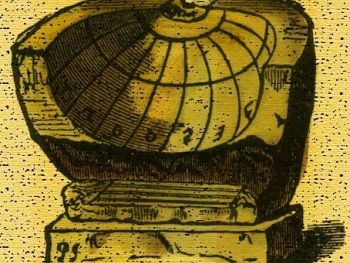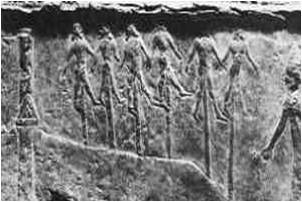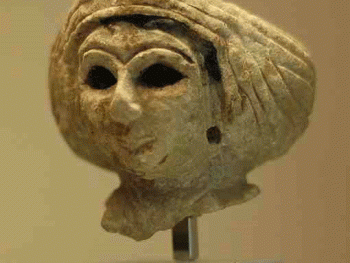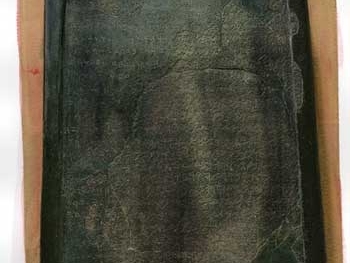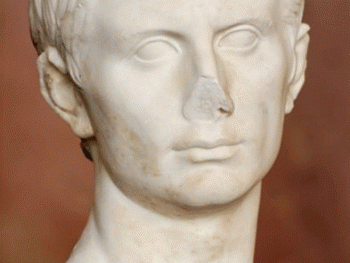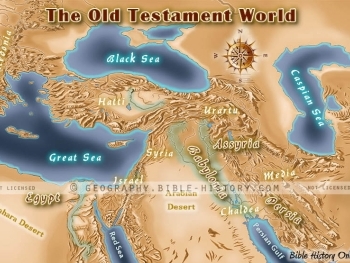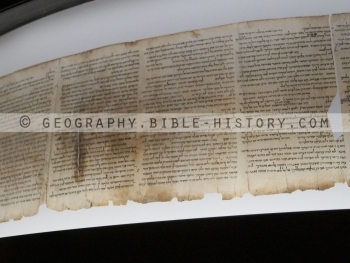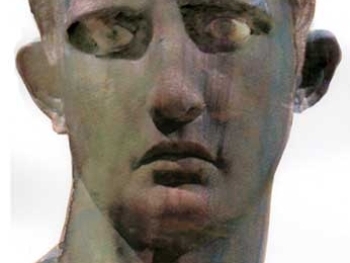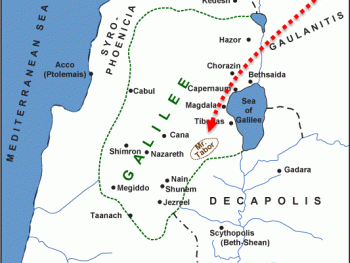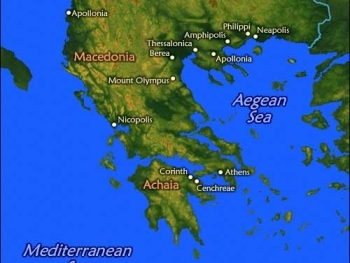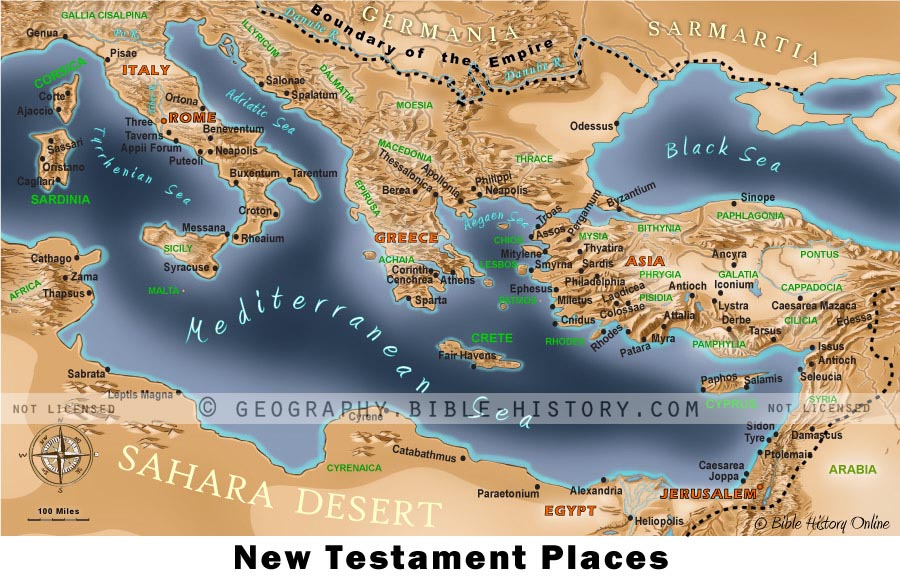
This map reveals the “Nations” within the ancient world during the first century A.D., the time of the New Testament. The New Testament world includes the areas of Israel, Asia, Greece, and Italy.
During the life of Jesus his ministry took place primarily in the land of Israel. Later the church which was led by his apostles eventually moved outside of Jerusalem and later the actual boundaries of the land of Israel. Paul purposed in his heart to go further with the gospel, to the lands of Europe and even the heart of the Roman Empire, the city of Rome herself. Therefore the New Testament World is designated as the area from the Land of Israel on the east to Italy on the west.
Source:

